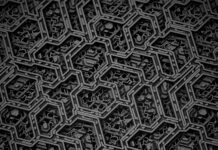Understanding AI in the quantum encryption is no longer just a niche concern reserved for cryptographers and researchers—it’s a pivotal aspect of cybersecurity’s future. As quantum computing rapidly evolves, the integration of AI in the quantum encryption landscape is becoming vital for strengthening data security, adapting to new threat models, and enhancing cryptographic systems. The convergence of AI in the quantum encryption field is forging new paths for threat detection, algorithm optimization, and secure communication protocols, making it essential for professionals in tech, defense, finance, and healthcare to stay ahead of the curve.
1. Understanding the Foundations of Quantum Encryption
To master AI in the quantum encryption domain, you must first grasp how quantum encryption fundamentally differs from classical encryption. Quantum encryption leverages the principles of quantum mechanics—particularly superposition and entanglement—to secure communication. One of the most notable applications is Quantum Key Distribution (QKD), which uses photons to transmit cryptographic keys securely. If a third party attempts to intercept the communication, the quantum state collapses, revealing the intrusion.
AI enters the picture by helping simulate and model quantum systems, optimize encryption algorithms, and interpret quantum behavior. This synergy ensures faster, more reliable implementation of quantum-secure networks, especially in industries where ultra-secure communication is essential.
2. The Role of Machine Learning in Cryptanalysis
Cryptanalysis involves finding weaknesses in encryption systems. AI, especially through machine learning (ML), can be used to test encryption methods by simulating attacks. In a quantum context, this allows researchers to explore how future adversaries might exploit weak points using quantum algorithms like Shor’s or Grover’s.
AI models can identify patterns in large data sets that human analysts may overlook. This insight can be used both to break older encryption and to build newer, quantum-resistant protocols. Understanding this application of AI is critical for building robust encryption strategies for the post-quantum world.
3. Enhancing Quantum Key Distribution with AI
QKD is often cited as the future of secure communication. However, real-world implementation can be complex and error-prone due to environmental noise, fiber-optic degradation, and photon loss. AI enhances QKD by analyzing real-time transmission data and adjusting the parameters of communication protocols accordingly.
Machine learning algorithms can help identify the optimal timing, transmission rates, and error correction techniques. As a result, QKD systems become more reliable, efficient, and scalable, bringing us closer to widespread adoption of quantum-secure communication.
4. AI-Driven Optimization of Quantum Algorithms
Quantum encryption relies heavily on algorithms optimized for quantum computing environments. AI helps improve these algorithms through advanced optimization techniques, such as reinforcement learning and genetic algorithms. These AI tools explore large search spaces, suggest alternative configurations, and iterate towards the most secure and efficient cryptographic designs.
For instance, AI can optimize error correction in quantum codes, reducing computational overhead while preserving data integrity. This leads to stronger encryption that can operate at scale in real-world networks.
5. Real-Time Threat Detection in Quantum Networks
A future quantum internet will require continuous monitoring for potential breaches and anomalies. AI-powered threat detection systems can monitor quantum networks in real time, analyzing traffic patterns, quantum noise, and even hardware performance to detect intrusions or anomalies.
Unlike traditional security systems, AI in quantum networks can adapt and learn from emerging threats. With anomaly detection techniques, AI can flag unusual patterns that may signal quantum-specific attacks—offering an essential layer of defense that evolves with the threat landscape.
6. AI-Powered Simulation of Quantum Environments
Quantum hardware is still in its early stages, so many researchers rely on simulations to test quantum encryption protocols. AI excels in creating accurate models of quantum systems, enabling researchers to run simulations faster and at greater scales.
This helps in modeling photon interactions, channel noise, and key exchange reliability—without needing a full-scale quantum computer. AI-enhanced simulations reduce research costs and accelerate the timeline for developing real-world quantum encryption applications.
7. Quantum-Resistant Algorithms Informed by AI Insights
As quantum computing becomes more accessible, traditional encryption methods like RSA and ECC will become vulnerable. The National Institute of Standards and Technology (NIST) is already evaluating post-quantum cryptographic (PQC) algorithms designed to resist quantum attacks.
AI is being used to test and refine these quantum-resistant algorithms. It can evaluate performance across different hardware, simulate large-scale attacks, and assess key strength more accurately. Mastering how AI helps create resilient algorithms will be essential for anyone working in cybersecurity or data infrastructure.
8. Intelligent Resource Allocation in Quantum Communication
Quantum systems are highly sensitive and resource-intensive. AI helps manage computational and energy resources in quantum networks more efficiently. It can decide how to route data packets, where to place qubits, and when to initiate or terminate secure communication channels.
For example, in a quantum network spread across continents, AI could determine the most reliable paths and optimal times for key exchanges. This level of intelligent orchestration ensures that quantum communication remains practical and scalable.
9. Integration with Classical Cryptographic Systems
For the foreseeable future, quantum encryption will need to coexist with classical systems. AI plays a crucial role in this integration by managing hybrid environments. It helps determine when to use quantum encryption and when traditional methods suffice based on risk assessment, latency, and system capabilities.
AI also facilitates seamless migration. For example, AI algorithms can assess your system’s readiness for quantum encryption, suggest gradual implementation plans, and provide real-time performance analytics to ensure minimal disruption.
10. Preparing for Quantum AI Threats
Ironically, the very technologies that bolster encryption—AI and quantum computing—can also be used maliciously. As we develop AI in the quantum encryption space, we must also anticipate its potential use in cyberattacks. Threat actors could use quantum-AI hybrids to break weak encryptions, simulate social engineering strategies, or bypass anomaly detection.
Staying ahead requires a deep understanding of both disciplines. Ethical AI frameworks, secure AI pipelines, and quantum-aware cybersecurity protocols will be necessary to defend against adversaries equipped with these dual-edge tools.
Conclusion
As the cybersecurity arms race enters a new era, AI in the quantum encryption space is poised to redefine how we secure information, manage privacy, and protect digital infrastructure. The growing intersection of AI in the quantum encryption domain empowers professionals with new tools for securing networks, fortifying encryption methods, and developing next-gen cybersecurity solutions. From enhancing Quantum Key Distribution to real-time threat detection and quantum algorithm optimization, AI in the quantum encryption field represents a transformational shift in digital security.
Whether you’re in enterprise IT, government defense, academia, or private-sector security, mastering the convergence of AI and quantum encryption will equip you to navigate the challenges—and seize the opportunities—of tomorrow’s cryptographic world.





























